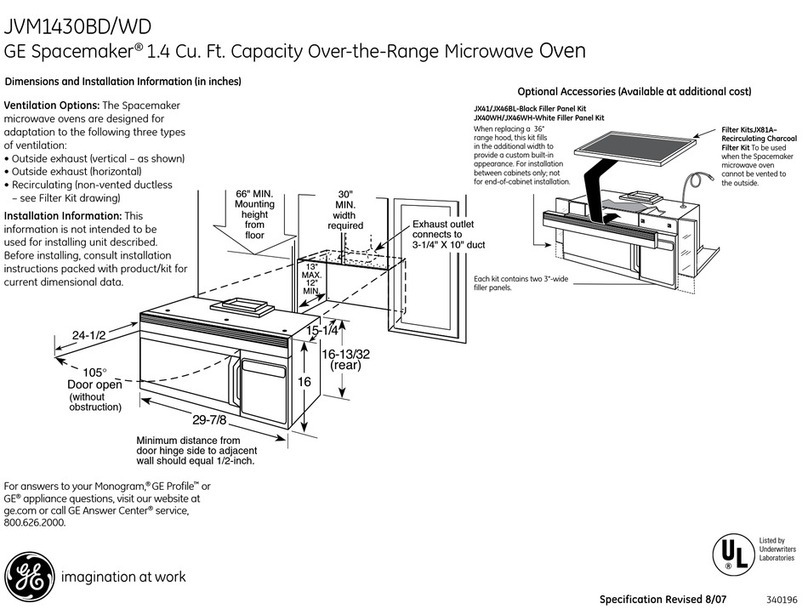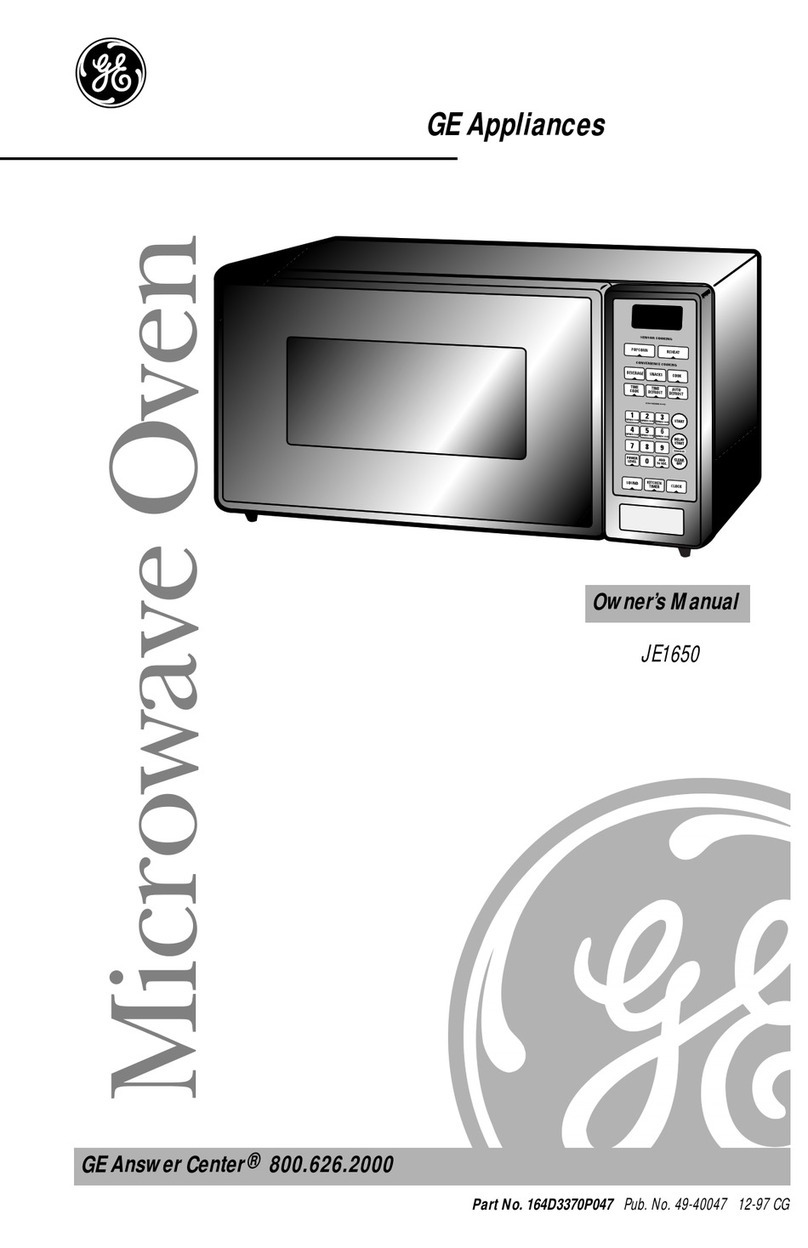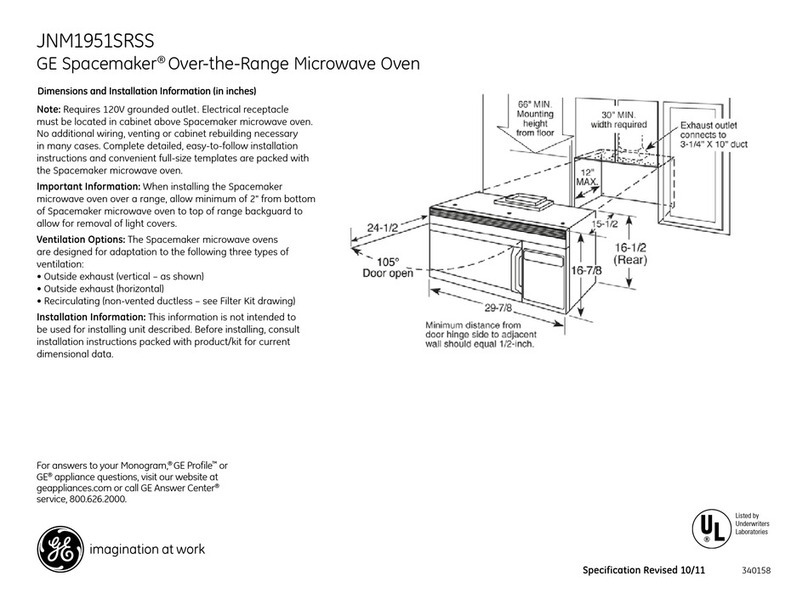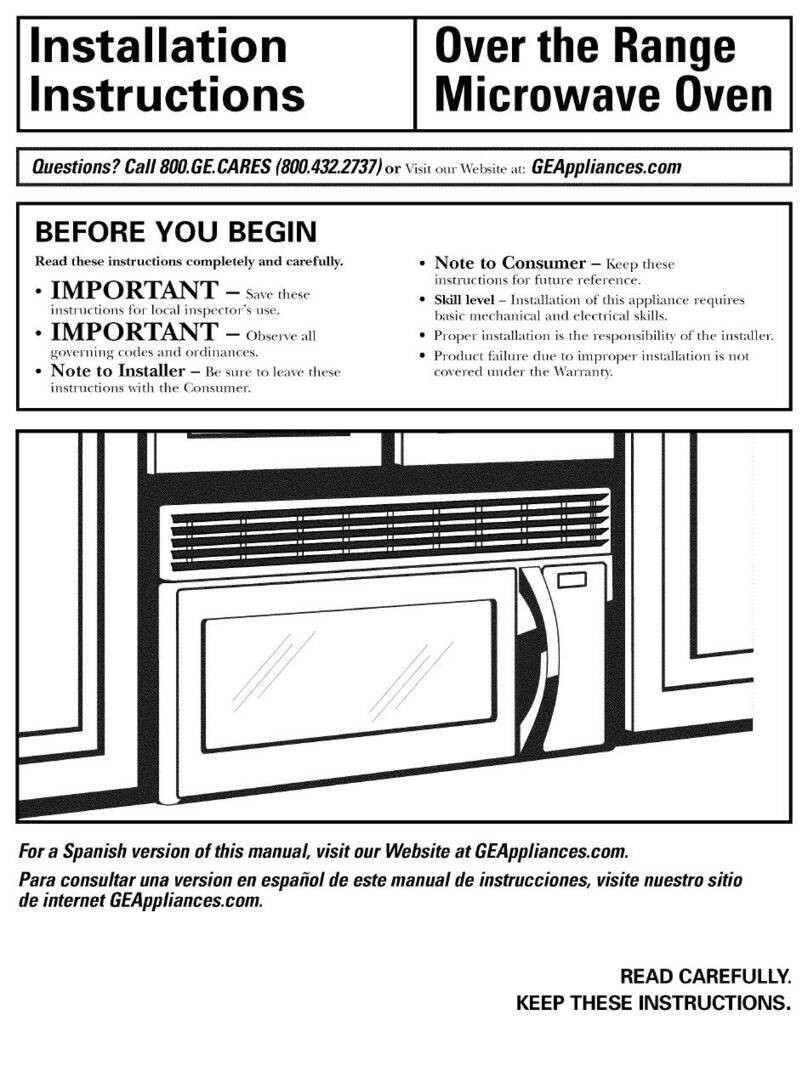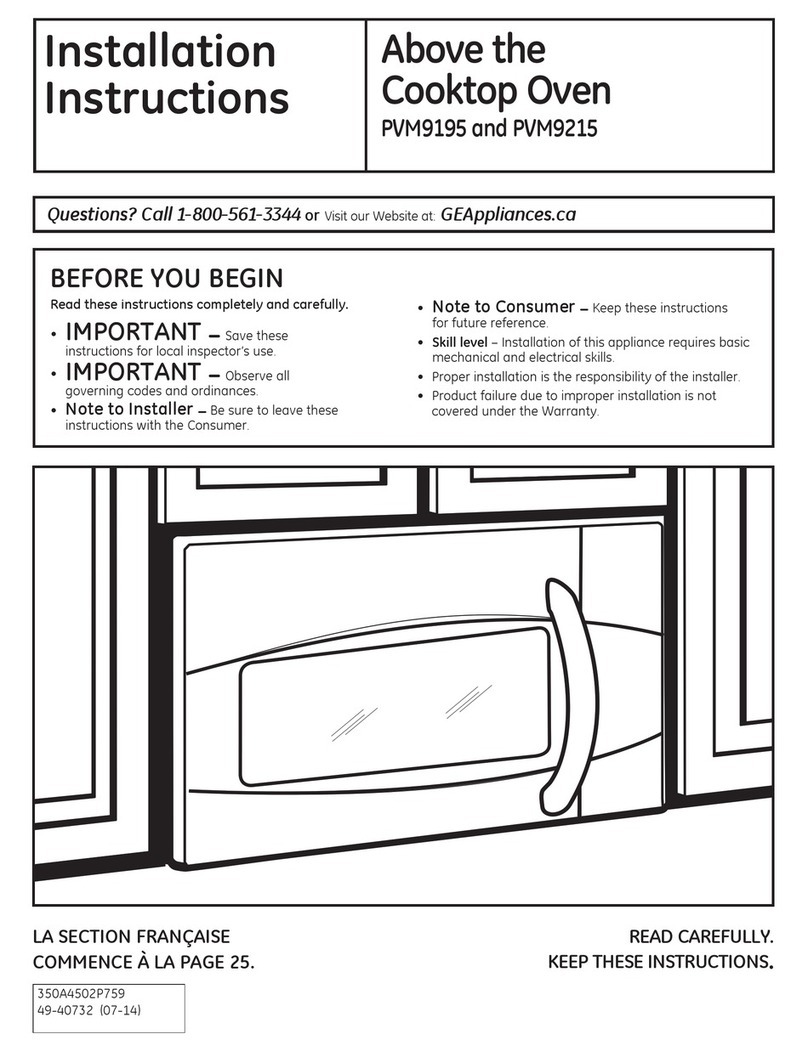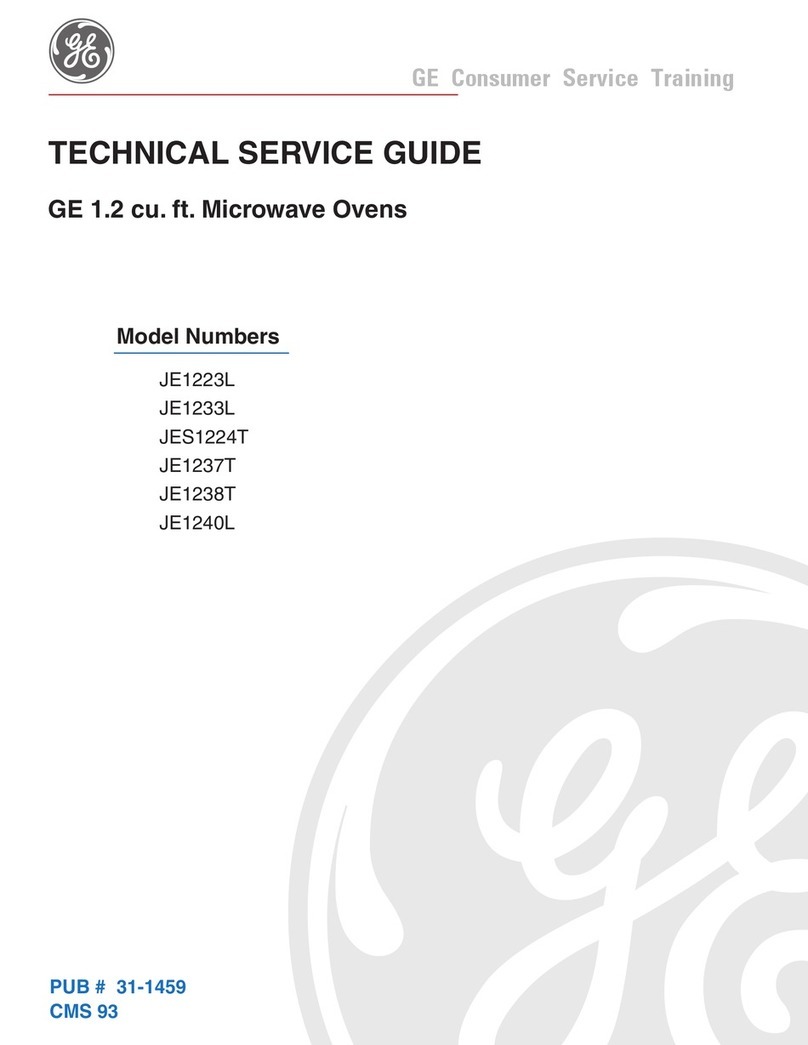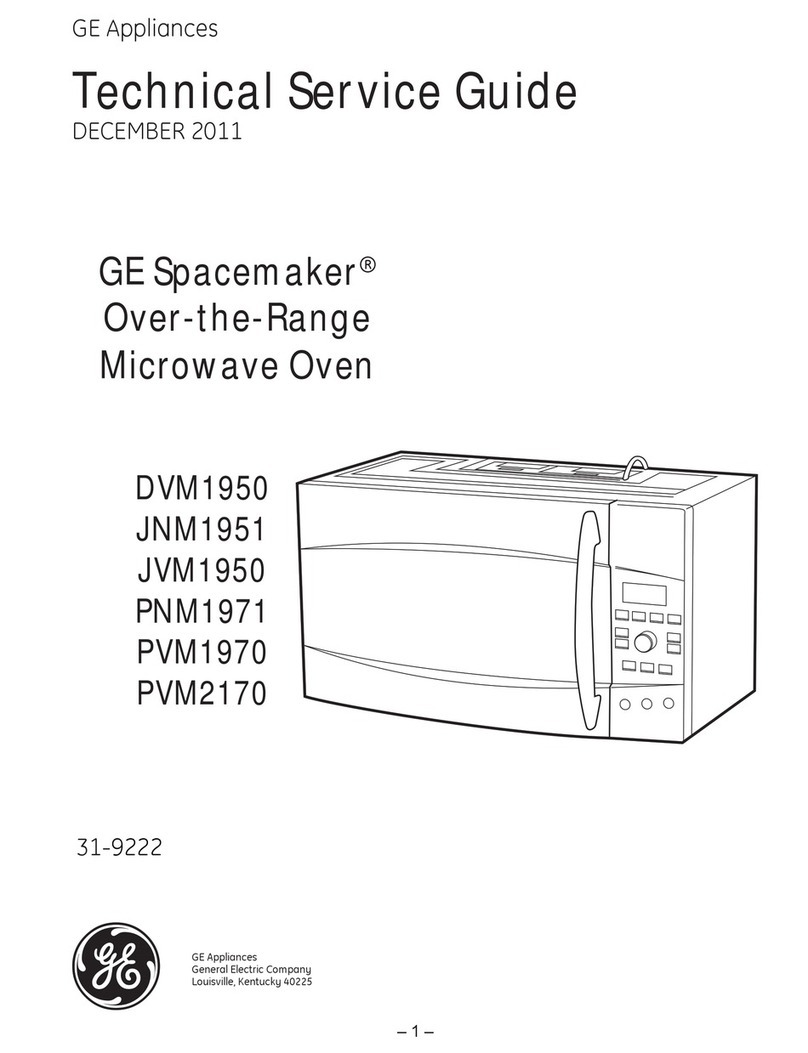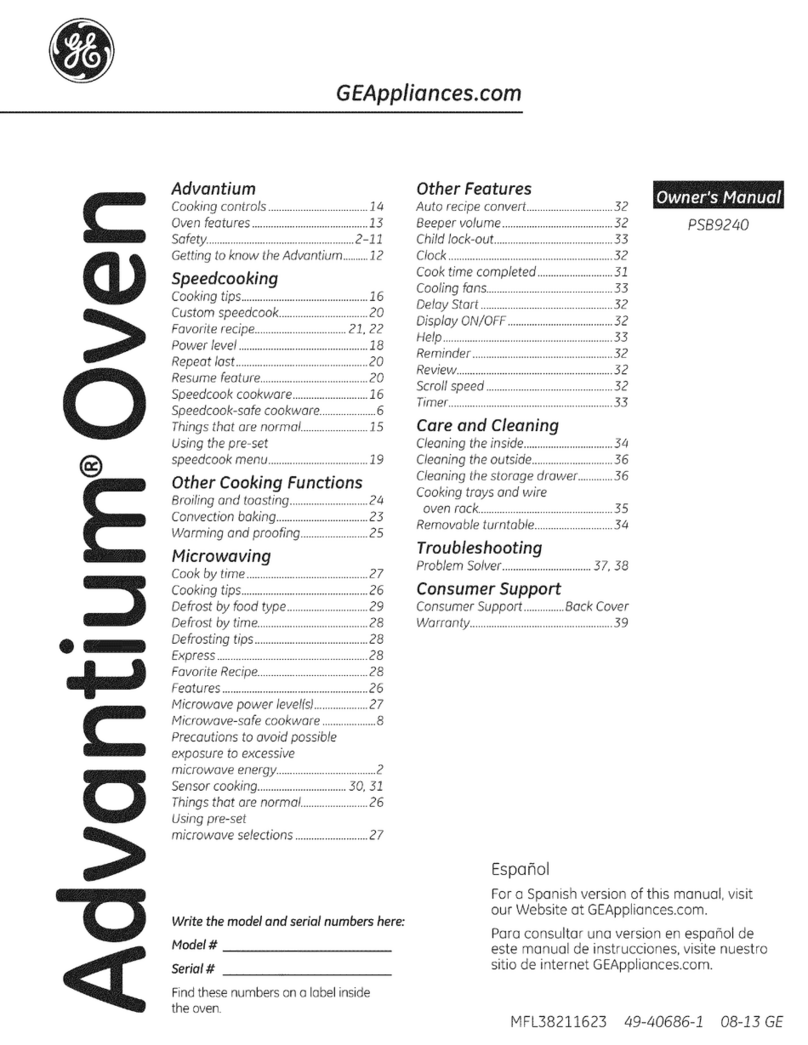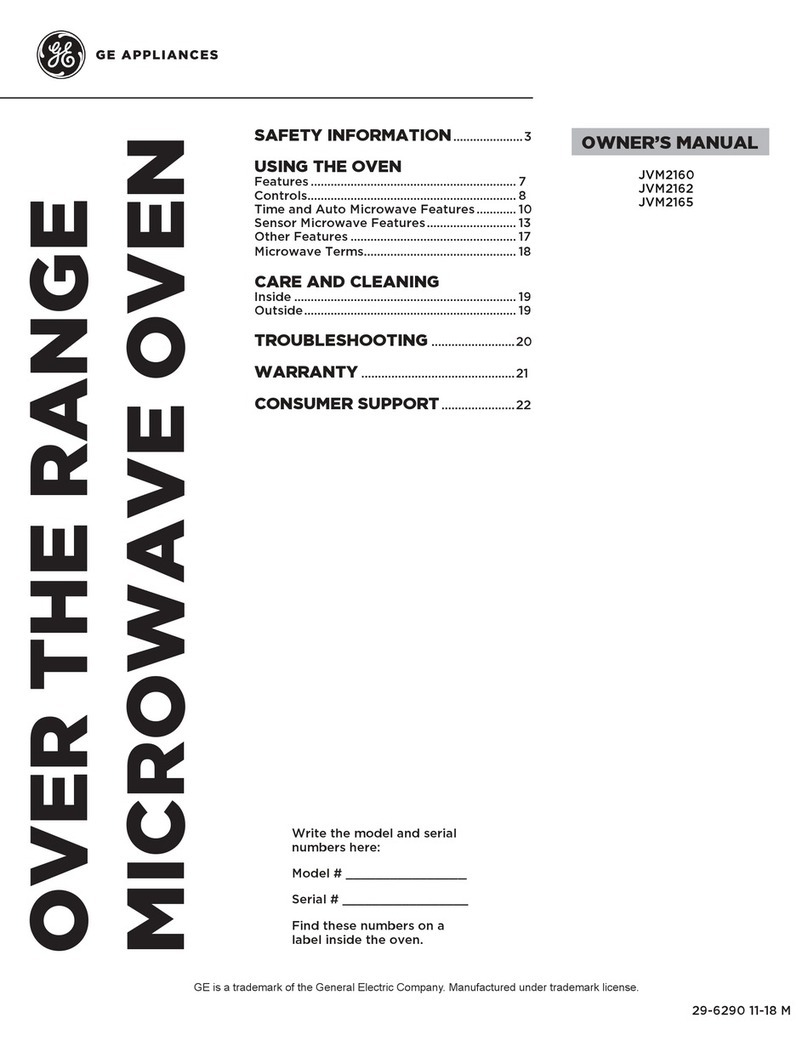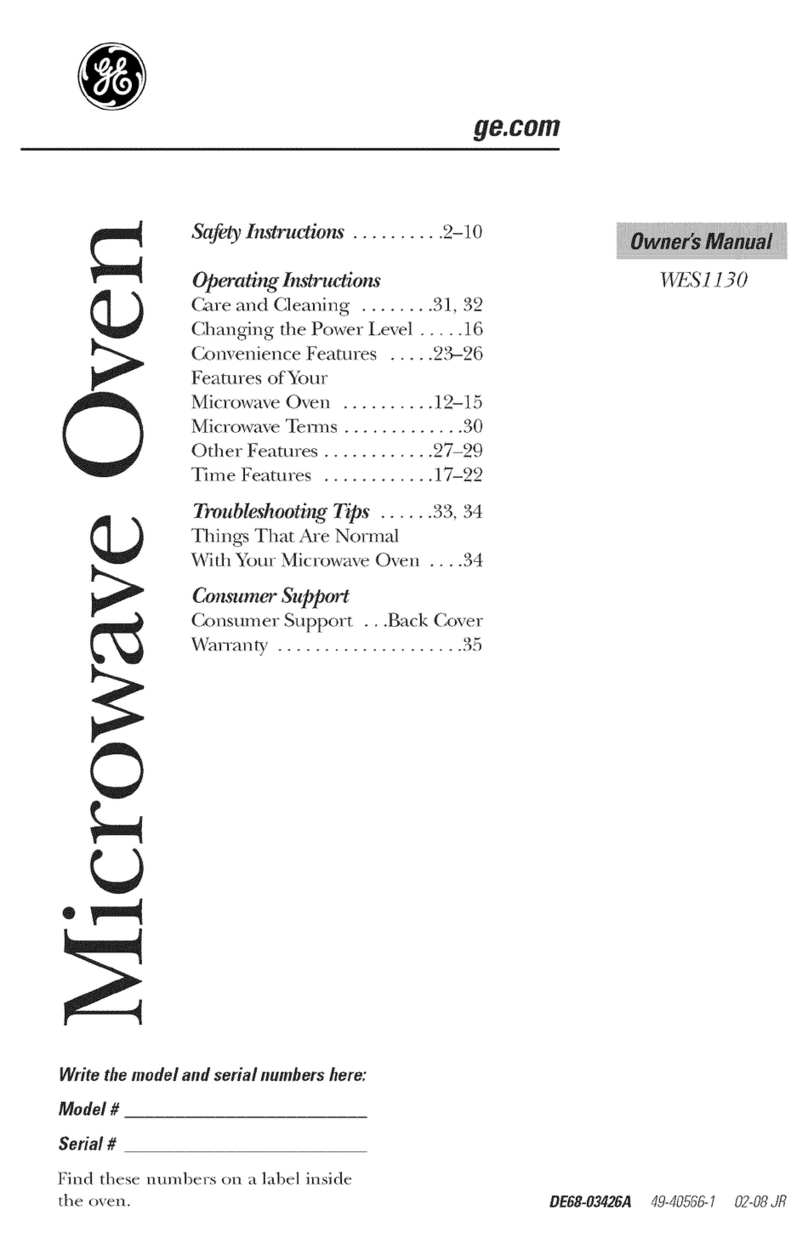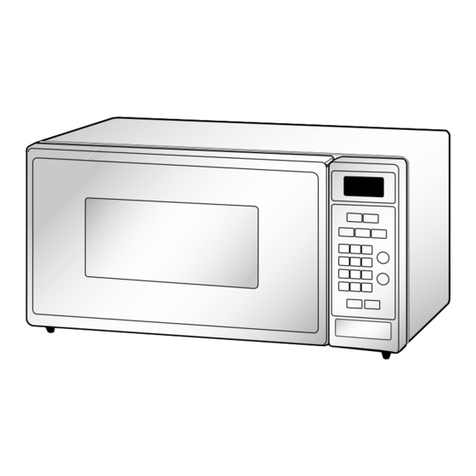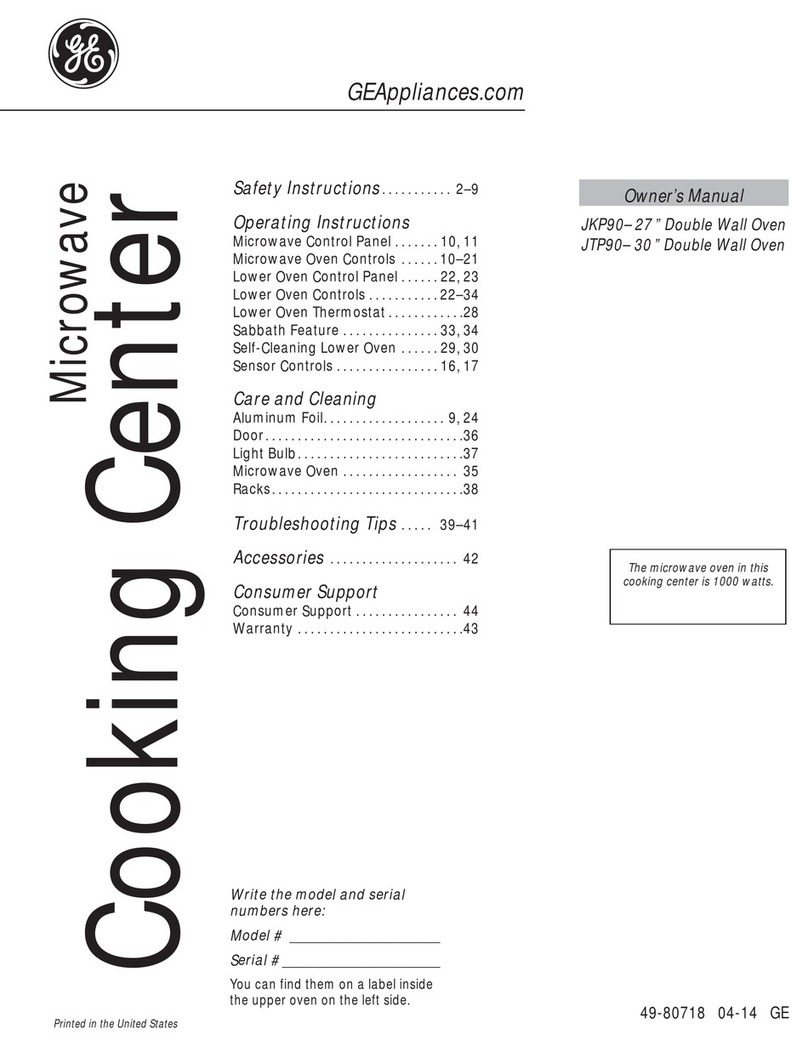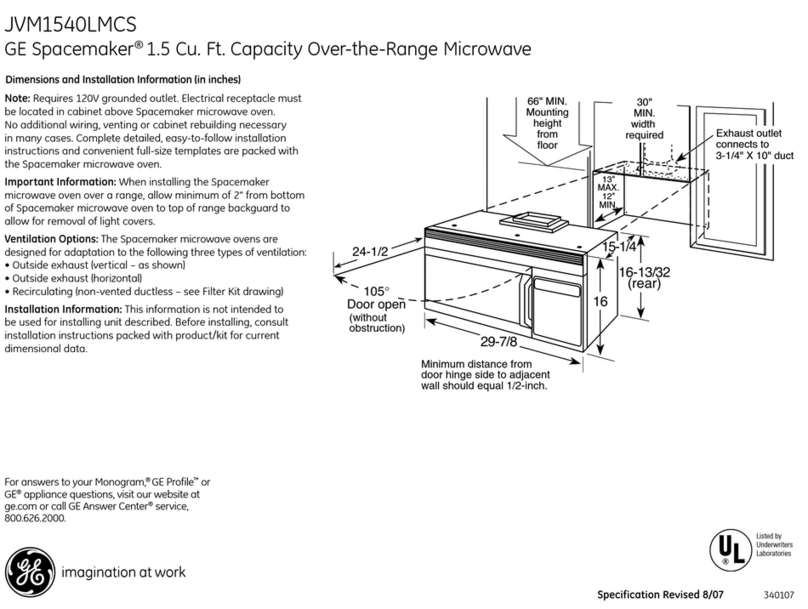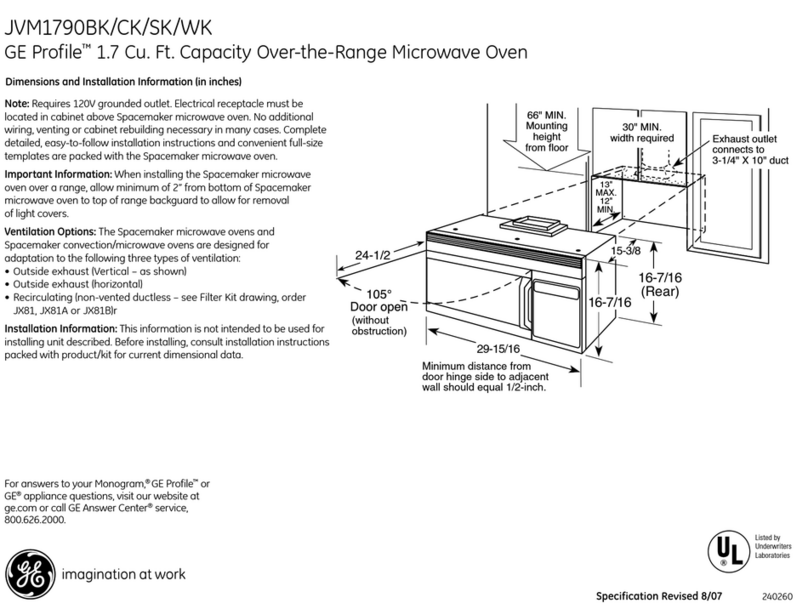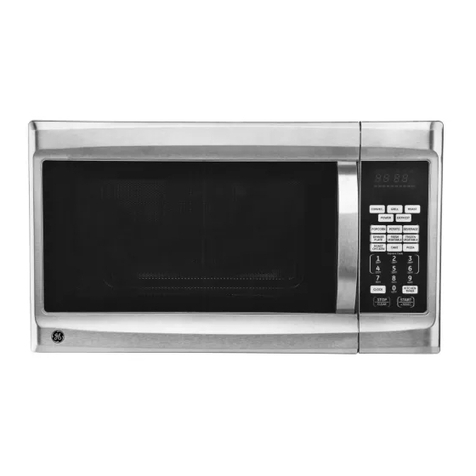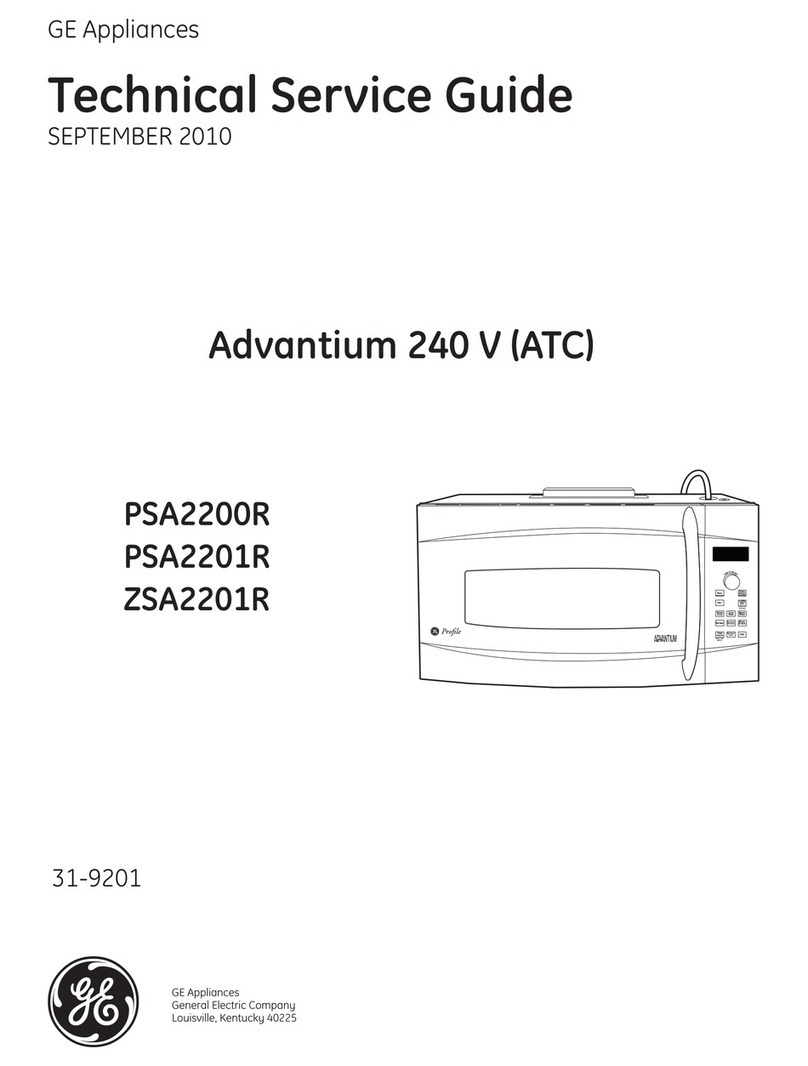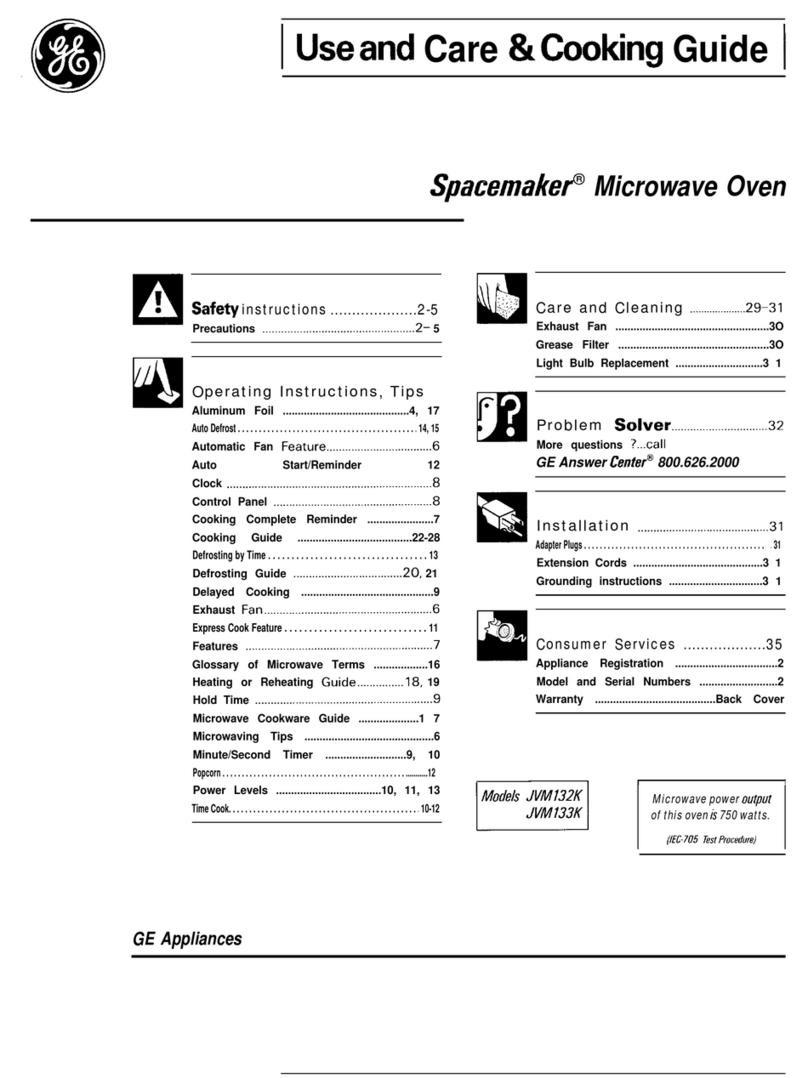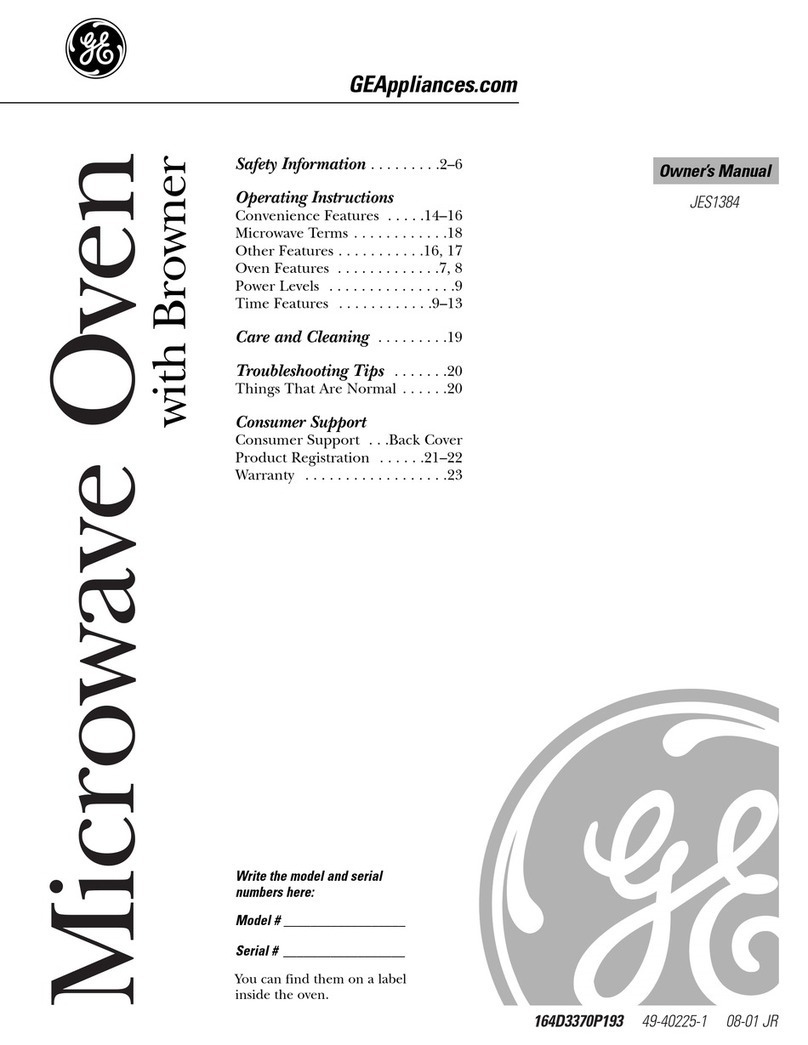.I
Microwave Oven:
●Read and followthe specific
“PRECAUTIONSTO AVOID
POSSIBLEEXPOSURETU
EXCESSIVEMICROWAVE
ENERGY” foundon page 3.
●Toreduce the risk of fire in the
ovencavity:
–Do notovercookfood.Carefully
attend appliance ifpaper, plastic
or other combustible materials
are placed inside the ovento
facilitatecooking.
—Removewire twist-ties from
paper or plastic bagsbefore
placing bags in oven.
—Donot use your microwave
ovento dry newspapers.
–Paper towels, napkins and
wax paper. Recycledpaper
products can contain metal flecks
which maycause arcing or ignite.
Paper products containingnylon
or nylonfilaments should be
avoided,as they may also ignite.
—Do not pop popcorn in your
microwave oven unlessinaspecial
microwavepopcorn accessory or
unless youuse popcorn labeled
for use in microwaveovens.
–Do not operate the oven while
empty to avoid damage to the
oven and the danger of fire. If
by accident the ovenshould run
empty aminute or two, no harm
is done. However,try to avoid
operating the ovenempty at all
times—itsavesenergy and
prolongs life ofthe oven.
—Ifmaterials inside the oven
should ignite, keep ovendoor
closed, turn ovenoff, and
disconnect the powercord, or
shut offpowerat the fuseor
circuit breaker panel.
●Someproducts such as whole
eggsand sealed containers—for
example,closed glassjars—may
explode and shouldnot be heated
in this oven.
cSeedoor surface cleaning
instructions on page 38.
●Don’t defrost frozen beverages
innarrow-neckedbottles(especially
carbonatedbeverages). Even if
the container is opened, pressure
can build up. This can cause the
container to burst, resulting in
injury.
●Use metal only as directed in
Cookbook. Foil strips as used on
meat roastsare helpful when used
as shownin Cookbook.
TV dinners maybe microwaved
in foiltraysless than 3/4” high;
removetop foil coverand return
trayto box. When using metal in
microwaveoven,keepmetal (except
for DOUBLE DUTYTMshelf)
at least 1inch away from sides
of oven.
●Cooking utensils may become
hot because of heat transferred
fromthe heated food. This is
especiallytrue if plastic wrap has
been coveringthe top and handles
ofthe utensil. Potholdersmaybe
neededto handle the utensil.
●Sometimes, the oven floor
can become too hot to touch. Be
carefultouching the floor during
and after cooking.
QDo not use any thermometer
in foodyouare microwaving
unlessthethermometeris designed
or recommendedfor use in the
microwaveoven.
●Remove the temperature
probe from the oven when not
using it to cook with. If youleave
the probe insidethe ovenwithout
inserting it in foodor liquid, and
turn on microwaveenergy, it can
create electrical arcing in the
oven, and damageovenwalls.
cAvoid heating baby food in
glassjars, evenwithout their lids;
especially meat and eggmixtures.
5
●Boiling eggs is not
recommended in amicrowave
oven. Pressurecanbuild up inside
eggyolkand maycause it to burst,
resulting in injury.
cFoods with unbroken outer
“skin” suchas potatoes, sausages,
tomatoes,apples, chicken livers
and other giblets, and eggyolks
(seepreviouscaution) shouldbe
piercedto allowsteamto escape
duringcooking.
●pl@ic utensils-plasticutensils
designedformicrowavecookingare
veryuseful, but should be used
carefhlly.Even microwaveplastic
maynot be as tolerant of
overcookingconditionsas are
glassor ceramic materials and
maysoftenor char if subjectedto
short periods ofovercooking.In
longerexposuresto overcooking,
the foodand utensilscould ignite.
Forthese reasons: 1)Use
microwaveplasticsonly and use
them in strict compliance with
the utensilmanufacturer’s
recommendations.2) Do not
subjectempty utensils to
microwaving.3) Do not permit
childrento use plastic utensils
withoutcomplete supervision.
.“Boilable” cooking pouches
and tightly closed plastic bags
shouldbe slit, pierced or vented
as directedin Cookbook. If they
are not, plastic could burst during
or immediately”aftercooking,
possiblyresulting in injury. Also,
plastic storagecontainers should
beat least partially uncovered
becausethey form atight seal.
When cookingwith containers
tightlycoveredwith plastic wrap,
removecoveringcarefullyanddirect
steamawayfrom hands and face.
